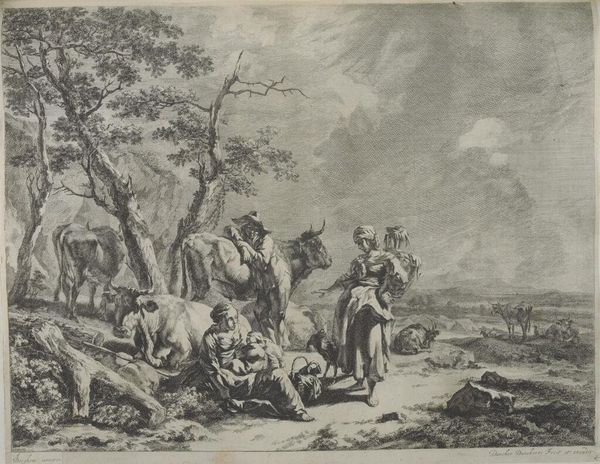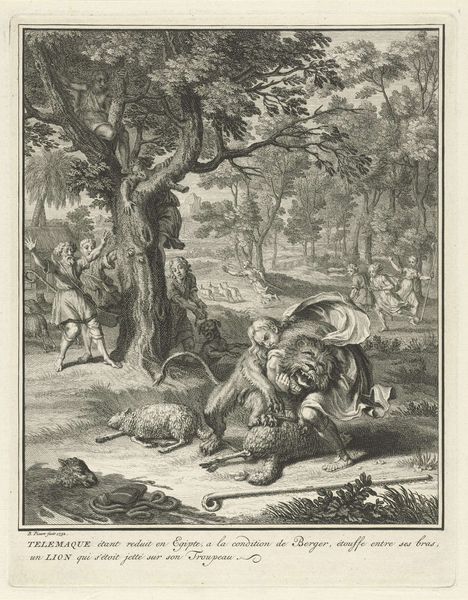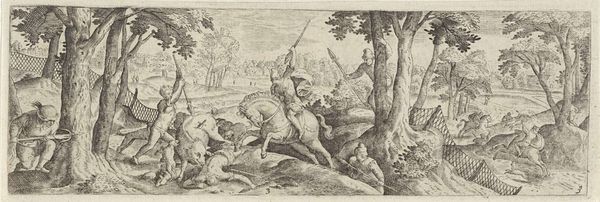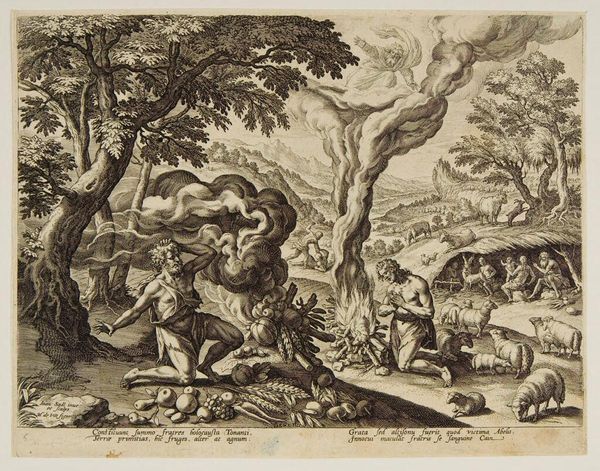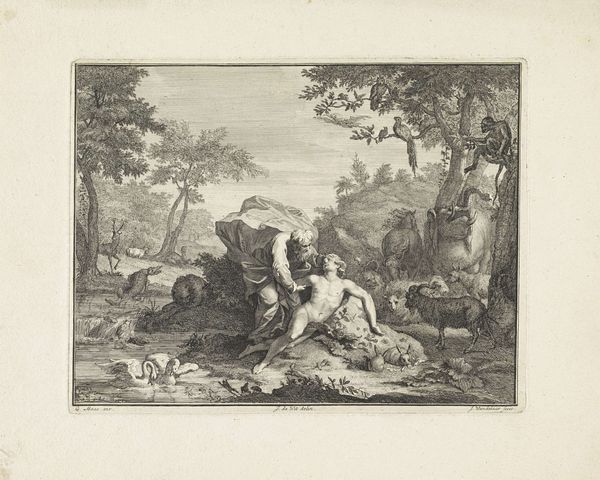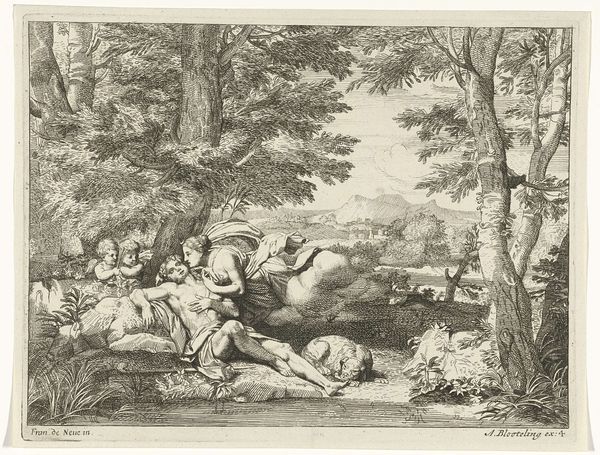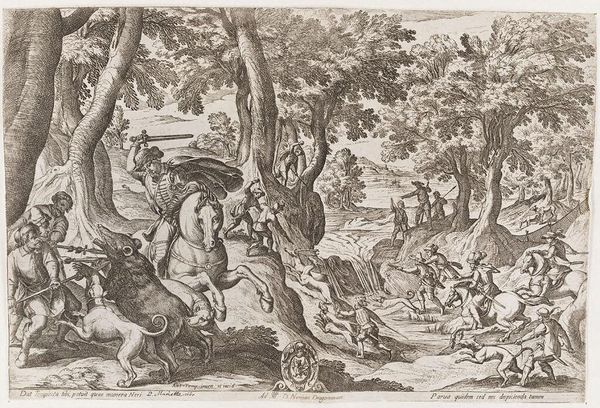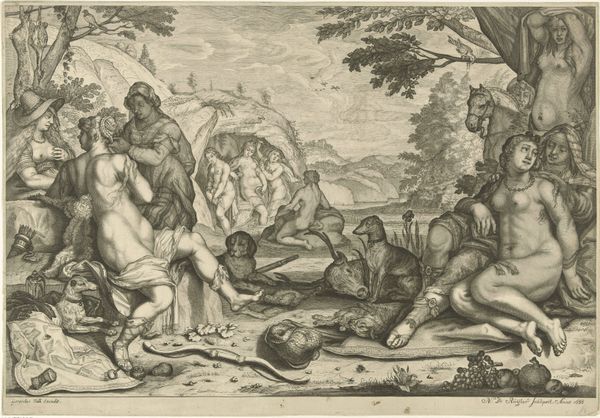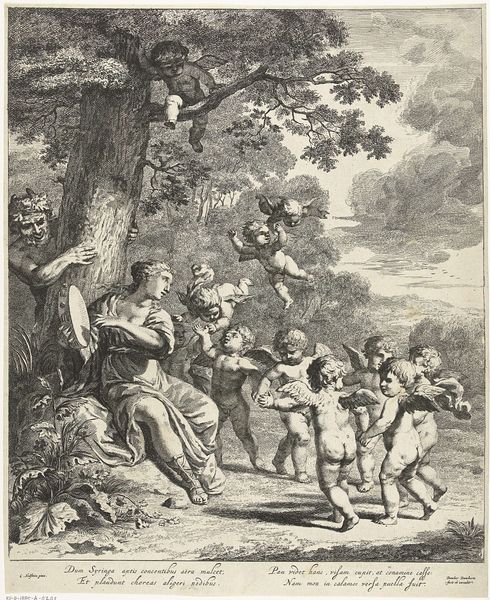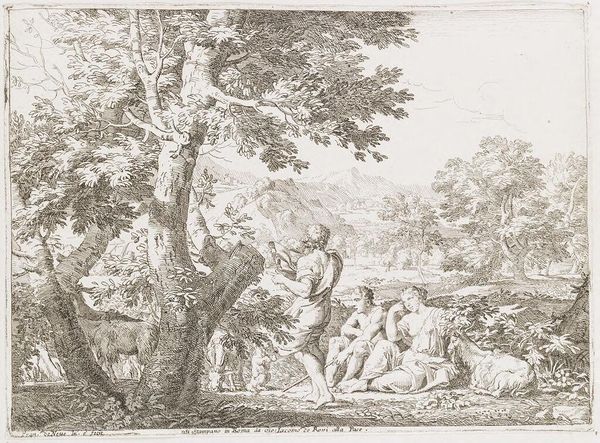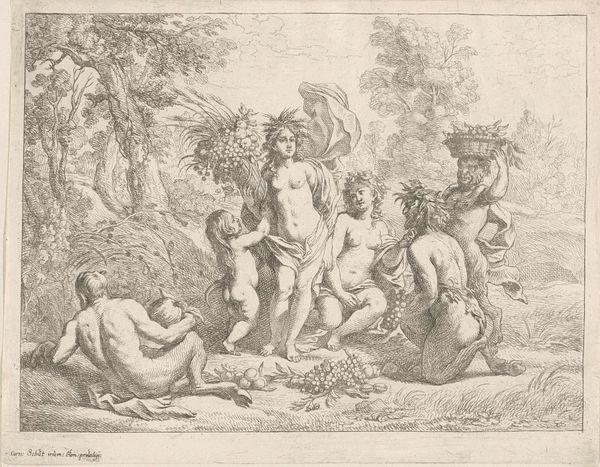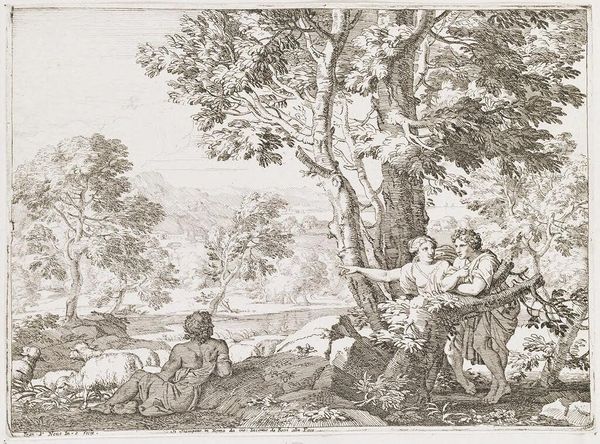
drawing, ink, engraving
#
drawing
#
allegory
#
baroque
#
landscape
#
figuration
#
ink
#
history-painting
#
nude
#
engraving
Dimensions: width 164 mm, height 118 mm
Copyright: Rijks Museum: Open Domain
Jan Goeree created this etching, titled 'Embleem: kaalheid,' sometime between 1670 and 1731. Goeree lived during the Dutch Golden Age, a period marked by significant cultural and economic growth in the Netherlands, but also stark social hierarchies. The emblem tradition often used images to convey moral or philosophical ideas. This piece depicts themes of loss and vulnerability through its imagery of a barren landscape and mourning figures. We see a veiled figure, possibly representing grief, alongside a despondent woman and a child. The stark, barren tree and the ruins in the background further amplify feelings of desolation and the transient nature of life. The figures’ nudity in the image complicates its message, as the female body is presented as both a symbol of vulnerability and a classical ideal, reflecting the period's complex relationship with beauty, morality, and representation. The scene creates a space for contemplating the emotional and physical consequences of loss, reminding us of the fragility inherent in the human condition.
Comments
No comments
Be the first to comment and join the conversation on the ultimate creative platform.
